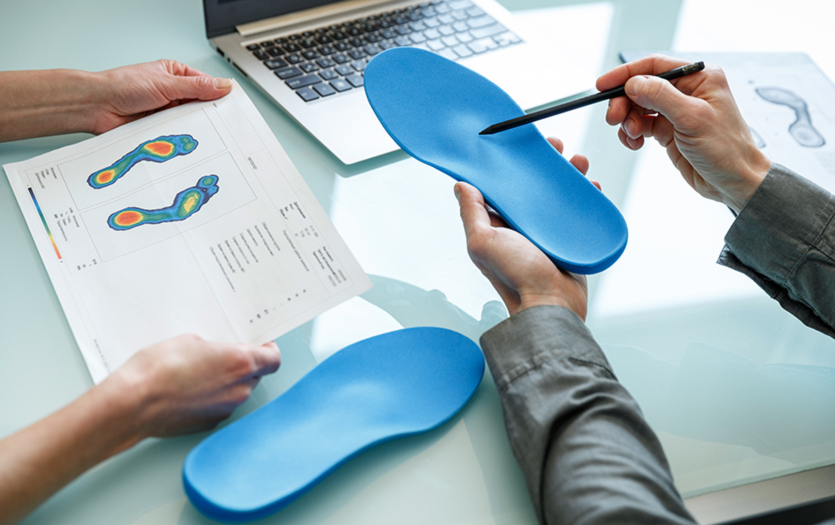 This post was written by Ashley M. Bojrab, DPM, FACFAS, ABPM, CWS, PPG – Podiatry.
This post was written by Ashley M. Bojrab, DPM, FACFAS, ABPM, CWS, PPG – Podiatry.
It’s Spring Break season, and some Midwesterners are lucky enough to go on vacation somewhere warm. For those in our area, this means traveling, sometimes long distances. On a recent family getaway to Florida, I noticed a few things that hadn’t caught my attention before. While walking through the airport, I spotted a vending machine made specifically for orthotics! As a podiatrist, naturally, I had to go investigate further.
There was a mat attached to the machine. A potential customer would stand on the sensors and then the machine’s algorithm would tell the person which orthotic they should choose. This was baffling to me. As a professional, all of the concerns started flooding into my mind. While the advertising promises relief for foot pain, I know that the wrong orthotic could actually cause the buyer – who’s enjoying a much-deserved vacation – a lot of problems. Before you fall into this vending, quick-fix trap, consider these important points about orthotics.
Quick fixes are hard to come by
Will an orthotic give you instant foot pain relief? It isn’t likely. These shoe inserts intended to support feet and improve foot posture, are considered medical equipment, and can affect the way someone walks. Therefore, they have the potential to cause ankle, knee, hip or even back pain. Your body needs to adjust to the orthotic and they need to be broken in gradually to avoid other aches and pains. Adding an orthotic into a shoe can make the shoe very tight, so it’s important to remember to remove the manufactured insole to allow more room in the shoe.
One size does not fit all
Knowing how to choose orthotic inserts that will work for you can be challenging. There are more than 100 different types of orthotic inserts on the market.
As you review the options, remember that your feet only have one arch, so multiple arch heights aren’t necessary. Be cautious of companies that charge hundreds to thousands of dollars for non-custom orthotics. This is heartbreaking, because the patient invests so much money in a product that isn’t custom to them and they don’t even get the benefit of being seen by a medical specialist.
Over-the-counter orthotics are the most common choice because they are readily available and affordable. It can take some trial and error to find the best fit. Generally speaking, it’s best to avoid collapsible or flexible orthotics. Typically, a stiff insert with arch support and cushion is a good bet. That said, it’s important to consider the type of activity it will be used for.
Custom orthotics are made specifically for the patient. Although they can be a few hundred dollars, they typically last longer than an over-the-counter orthotic. Patients who have bunions, hammer toes, calluses or abnormal foot types do best with a custom orthotic, since the idea is to accommodate for increased pressure in a particular location. Custom orthotics can be made by a podiatrist or pedorthist. Pedorthists have specialized training in footwear and supportive devices. Investing in the right orthotic can offer life-long benefits.
If you are experiencing foot discomfort, it’s always best to consult your podiatrist. They can offer guidance specific to your circumstances. And please, avoid the vending machines this spring.



